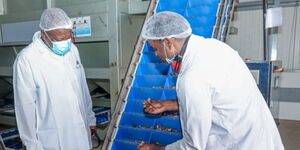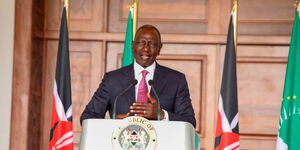In recent years, Kenyans have increasingly gained interest in the moringa tree farming industry which is earning farmers thousands and millions in profits.
Notably the fast-growing tree - which takes between four to six months to mature- has gained prominence among farmers living in harsh climatic conditions such as those in the Coastal, Eastern, Rift Valley and Western regions.
According to the Kenya Forestry Research Institute (KEFRI), the moringa tree thrives well in areas that experience hot weather and low rainfall.
On the other hand, the tree is also multi-purpose with different parts of the tree used to process a range of products such as powder and oil - which are predominantly used for cooking.
"The leaves are a good source of protein, vitamins A, B and C, and minerals such as calcium and iron; the pods, green peas and seeds can also be eaten, while the flowers can be either eaten or used to make tea," KEFRI explained.
According to various farmers who venture into moringa farming such as EMUKA Moringa Cooperative Society in Makueni County, a litre of moringa oil retails at an average of Ksh12,000.
Planting Process
Just like other farm products such as maize, the planting of moringa trees begins with ploughing land and digging holes and placing two seeds per hole.
Farmers are encouraged to use manure in the process.
"If establishing from seedling, square holes 1 metre deep and 1 metre wide spaced at 3 metres by 2 metres apart are dung. Add compost manure mixed with soils from the hole, and return the mixture to the planting hole and water before planting," KEFRI advises.
As the tree grows, farmers are often required to cut off the top of the tree when it reaches 1.5 metres to allow for more branching.
To maximise the use of land, farmers also practice integrated farming with plants such as tobacco and aloe vera.
How Moringa Products Are Made
Upon harvesting, oil and powder are extracted from the plant by crushing the seeds. Previously, the process was done manually, however, a number of farmers use machines - similar to those of posho mills to get the powder.
Benefits
Apart from nutritional benefits, products from the tree also hold nutritional value.
For instance, moringa powder is used in treating ailments such as diabetes, anaemia, high blood, pressure and skin disorders. The oil is also used for massage.
Given the increasing demand for the products globally, Kenyan farmers venturing into moringa farming are also exporting some of the products to countries such as China, Germany and South Korea.
Challenges
Some of the challenges moringa farmers face include poor germination rate. The trees are also prone to attack by termites which can lead to mass losses for farmers if not monitored.












